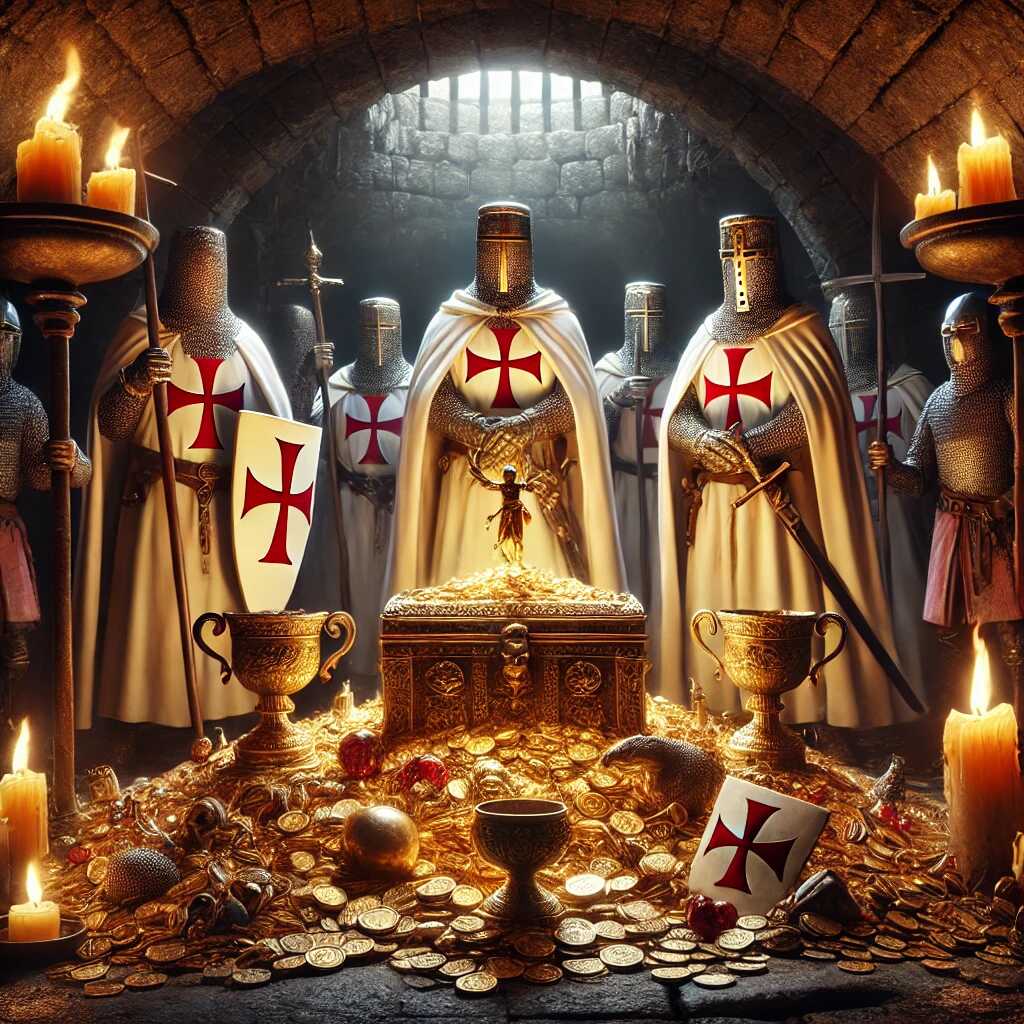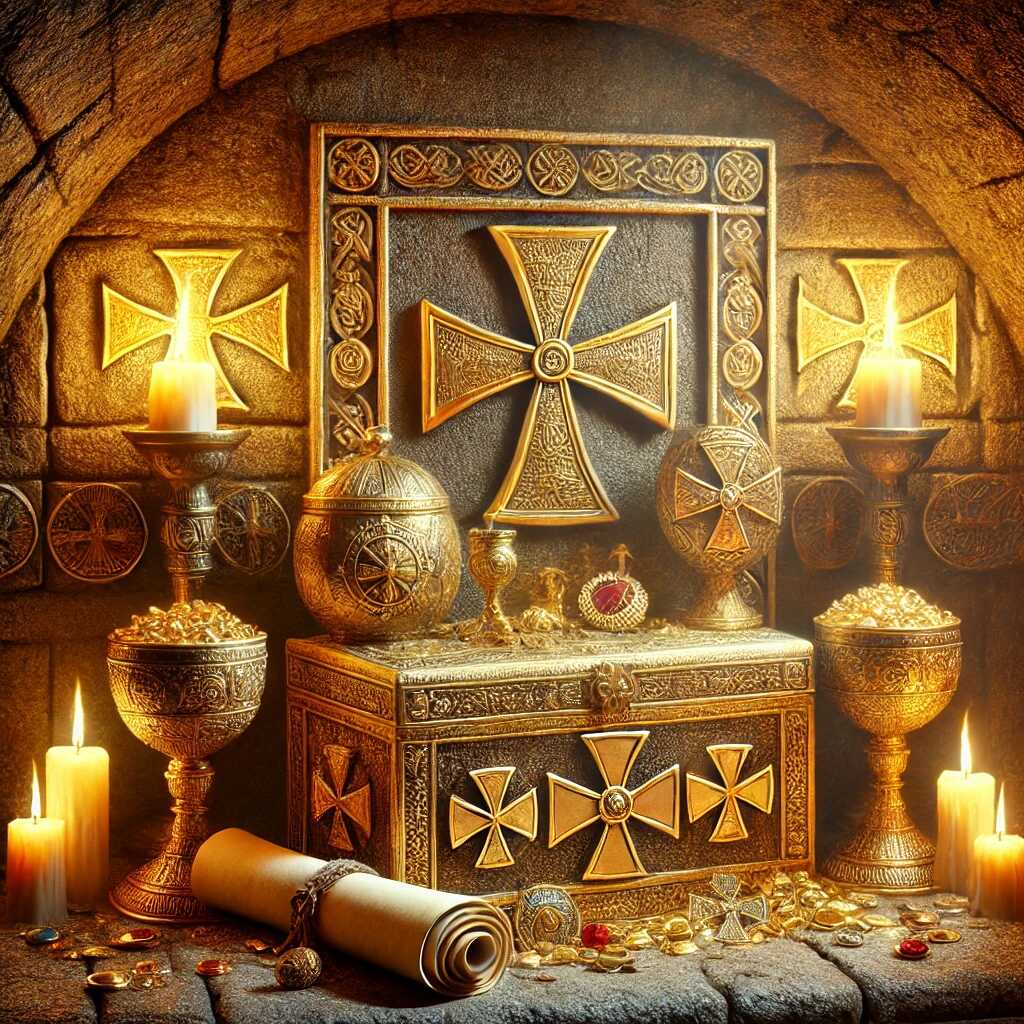
The Mysteries of the Templar Treasures: Legends, Truth, and Speculations

The Knights Templar, a medieval Christian military order founded in 1119, have long been shrouded in mystery. Among the most enduring tales surrounding them is the story of their fabled treasures—hidden hoards of wealth, sacred relics, and arcane knowledge. These legends have fascinated historians, treasure hunters, and storytellers for centuries, blending historical truth with speculation and myth.
During their nearly two centuries of existence, the Templars amassed incredible wealth. Originally established to protect pilgrims traveling to the Holy Land, the order quickly gained favor with European monarchs and the Catholic Church. Generous donations of land, gold, and other valuables flowed into their coffers, as nobles sought to support the Crusades—or secure spiritual blessings. Over time, the Templars developed one of the first international banking systems, allowing pilgrims to deposit funds in one location and withdraw them safely elsewhere. This financial ingenuity only added to their immense power and influence.
By the 13th century, the Templars had become one of the wealthiest organizations in Europe, their fortune matched only by their secrecy. However, this prosperity also made them targets. In 1307, King Philip IV of France, heavily indebted to the order, orchestrated a mass arrest of Templars. On the infamous Friday, October 13th—a date that inspired modern superstition—hundreds of knights were accused of heresy, blasphemy, and other crimes. Many were tortured into confessions, and their Grand Master, Jacques de Molay, was burned at the stake in 1314. Officially, the order was dissolved, and their assets seized by the crown and the Church.
Yet rumors quickly spread that much of the Templar treasure had vanished. As the arrests began, it was said that ships departed from Templar strongholds, carrying gold, relics, and sacred artifacts to undisclosed locations. These stories sparked centuries of speculation about the treasure's fate and its potential locations.
One of the most enduring legends ties the Templars to the Holy Grail, believed to be the cup used by Christ at the Last Supper. Some theorists suggest the Templars discovered the Grail during their time in the Holy Land and hid it in a secret location, possibly beneath Scotland's Rosslyn Chapel. Another theory connects the Templars to the Ark of the Covenant, the biblical chest said to hold the Ten Commandments. Excavations conducted by the Templars on Jerusalem's Temple Mount fuel speculation that they uncovered and safeguarded this sacred relic.
Beyond these relics, many believe the Templars concealed vast hoards of gold and jewels. Tales of treasure-filled tunnels and hidden vaults abound, with locations such as La Rochelle, a key Templar port in France, and Oak Island in Nova Scotia frequently cited as potential hiding places. Oak Island's infamous Money Pit, a shaft containing layers of traps and mysterious artifacts, has been the subject of countless treasure hunts, with some claiming it is connected to the Templars.

Other legends suggest that the Templar treasure was not solely material but intellectual or esoteric. According to these theories, the Templars possessed sacred knowledge, secret maps, or ancient texts that could unlock hidden truths about the divine or the universe. Some believe this knowledge included discoveries about uncharted lands or even the secrets of eternal life.
Despite centuries of searching, no definitive evidence of the Templar treasure has been found. Many historians argue that the treasure may be more myth than reality, its story amplified by sensational accounts and conspiracy theories. Others, however, maintain that the Templars' organizational prowess and secrecy could have enabled them to hide their wealth successfully, leaving tantalizing clues for future generations.
Certain locations have become focal points for treasure hunters. Rosslyn Chapel in Scotland, with its intricate carvings and mysterious symbolism, is often rumored to conceal the Holy Grail or other treasures. In Jerusalem, the Temple Mount, where the Templars established their headquarters, remains a site of historical intrigue. Meanwhile, the ships that allegedly sailed from La Rochelle on the eve of the Templar arrests have sparked theories of treasures hidden across Europe or transported to the New World.
The mystery of the Templar treasure endures because it represents more than just lost riches. It speaks to humanity's fascination with the intersection of faith, power, and the unknown. From the Holy Grail to uncharted lands, the legends of the Templars invite us to imagine what might lie hidden just beyond our reach. Whether the treasure is a cache of gold, a sacred relic, or a metaphor for spiritual enlightenment, the story of the Knights Templar continues to captivate the world.


